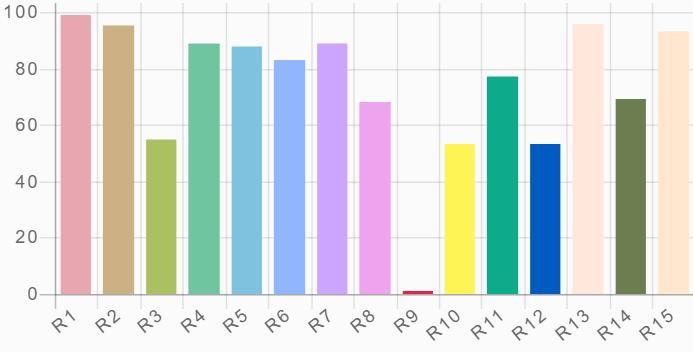The color rendering index (CRI) and R9 are two important elements to consider when selecting the LED strip light or the necessary accessories. This can be essential for contractors and distributors that best meet customer needs. Nowadays, the color quality is an important factor in the evaluation of LED lighting for commercial and residential applications.
What does CRI and R9 mean?
To define the term R9, first of all, it is important to understand what the color reproduction index is. The color rendering index is a classification system that measures the precision with which a light source produces the color of an illuminated object. Measures the ability of the light source to display colors of “tactile” or “normal” objects, compared to a familiar reference source, be it daylight or incandescent light. The color rendering index is an average based on R1 to R8. R9 is one of six saturated test colors that are not used to calculate the CRI.
Since you can find a percentage of the mixed red color in the different hues of most processed colors, the ability to reproduce with red precision is the key to accurately representing the colors of the displayed objects. High R9 lamps produce the most vivid colors.
The metric of the color rendering index is divided into 14 color regions from R1 to R14. The color rendering index is an average value based on the color ranges R1 through R8 of the metric, but does not take into account the remaining six additional color references. A high CRI, combined with a high R9 value, produces the most accurate color screen.
Why is the value of R9 important?

The reds are common in products, flesh tones and meats (if found in a grocery store) and the scene is animated. They will make you look healthier in front of a mirror. They will make your shop warm and comfortable. A lamp with a high CRI but a low R9 value will make your environment look boring. Many retailers were caught by a seemingly excellent luminaire with a CRI of 80 and above, but for unknown reasons; The final scheme does not seem to be as exciting as expected. This is mainly because a low value of R9 again attracts attention.
Whether in the hospital, in an artisan showcase, in a restaurant or at home, the color is reddish to the human eye to understand pure colors. A high R9 value shows a more accurate representation of the actual color.
What value of CRI and R9 would it be wise to look for?
Conventionally, the LED elements have been set to have acceptable light quality if they have a color rendering index of at least 80 and an estimate of R9 greater than zero. This applies to some applications. In most industrial environments and in some commercial environments, you do not need a high value on R9, although it can not fail. For cases of retail, printing, therapeutic or art, to give some examples, a high value of R9 is of paramount importance, and you need to search for a CRI of at least 90 and an estimate of R9 of not less than 60.

Why is red such an important color?
Red is a crucial color for many applications including photography, textiles and the reproduction of human skin tones.
Many objects that do not appear red actually are a combination of colors, including red. Skin tones, for example, are very much influenced by the redness of the blood that flows right beneath our skin.
Therefore, a light that lacks red will make a person look pale, or even green. This can be problematic for medical applications where color appearance is critical for accurate diagnoses. In other applications such as photography, aesthetic appearance is crucial and many times cannot be corrected even in post production and digital editing.
When searching for a high color quality LED, be sure to inquire about the CRI as well as its R9 value.

